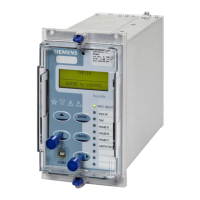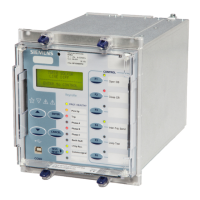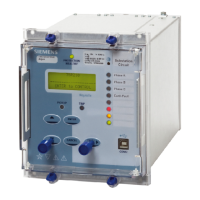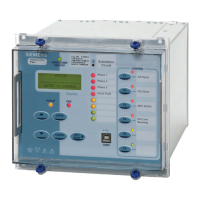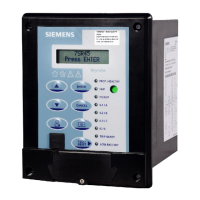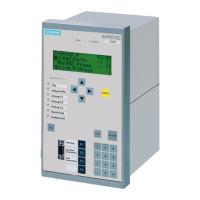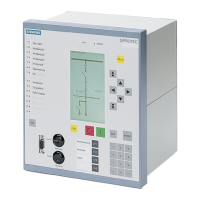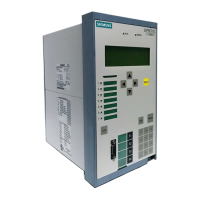7SR105 Rho and 7SR17 Rho Applications Guide
©2018 Siemens Protection Devices Chapter 7 Page 16 of 31
values indicates the magnitude of thermal capacity used to start. This amount must always be available before a
restart is permitted. For safety, this figure should be multiplied by 1.25. For example, if 20% of capacity is used
during starting, then 20% x 1.25 = 25%, and the Thermal Restart Inhibit setting should be 75%.
Alternatively auto-setting can be selected.
Thermal Restart Mode
The default setting ‘Capacity’ can be used.
Summary of Thermal Settings
0.10
1.00
10.0
0
100.0
0
1000.0
0
0.0 1.0 2.0 3.0 4.0 5.0 6.0 7.0 8.0 9.0 10.0
Overload Level (Multiple of Setting Itheta)
Time (secs)
4.8 x Itheta
0.95 x Iθ
2 x run up = 8 secs
TauH =
4 mins
Figure 2.2-2 Summary of Thermal Settings
Thermal overload (Itheta) = 0.9 x In
Heating Constant TauH = 4 minutes
Starting Constant TauS = 1
Cooling Constant TauC = 10
H/C = 64%
49 Capacity Alarm Setting = 95%
Load Alarm Setting = 1.0 x Itheta
Stall Protection
The fundamentals of this protection feature are explained in section 2.1.2.
In the example being considered the run-up time is 4 seconds and the safe stall time is 11 seconds. In this case
the thermal characteristic gives sufficient protection for normal starting and a stalled motor condition can be
detected by current/time grading. The ’14-1 Delay’ setting should be set to be longer than the run-up time and
less than the safe stall time, a time setting of 5 seconds should be chosen.
If the motor starting time is equal to or exceeds the stall withstand time it is necessary to use a stall element that
can operate only when the motor is running, by either:-
Selecting Gn14-2 Control to ‘Running’, or
Using a tachometric switch mounted on the rotor to signal that the motor is running. A relay binary input
is configured to be energised by this switch and is programmed to the ‘No Accel.’ function in the input
configuration menu. Select Gn14-2 Control to ‘No Accel’.

